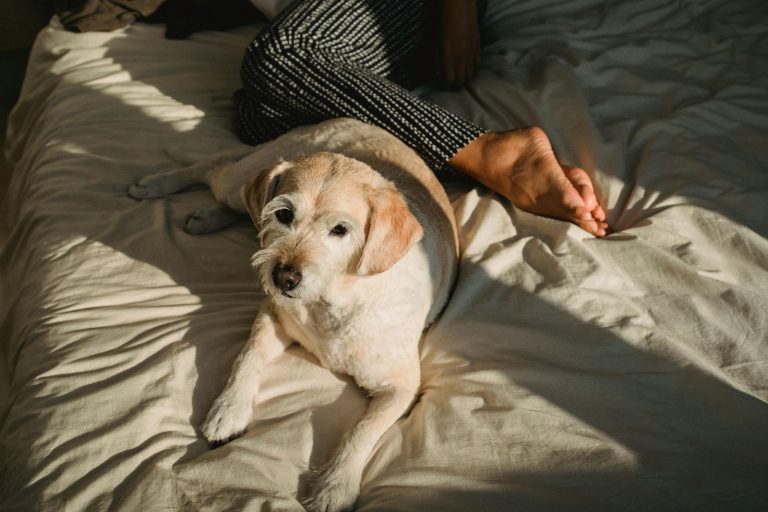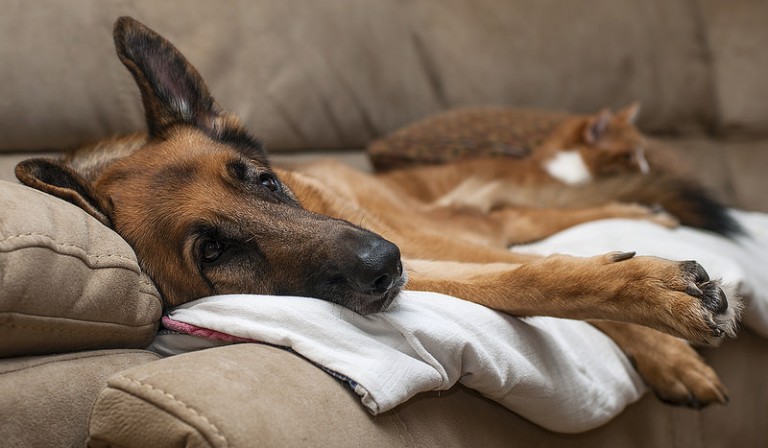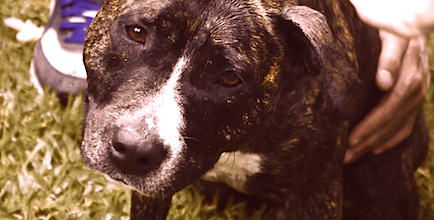Dog Bloat Timeline: Recognizing and Treating GDV in Dogs
Learn the critical dog bloat timeline, symptoms, and treatments for GDV to save your dog’s life. Immediate veterinary care is crucial.
This pet health content was written by veterinarians, Dr. Debora Lichtenberg, VMD, and Dr. Pippa Elliott, BVMS, MRCVS. It was last reviewed by Dr. Elliott and updated on June 21, 2024
If you have questions or concerns, call your vet, who is best equipped to ensure the health and well-being of your pet. This article is for informational purposes only and is not a substitute for professional medical advice, diagnosis or treatment. See additional information.
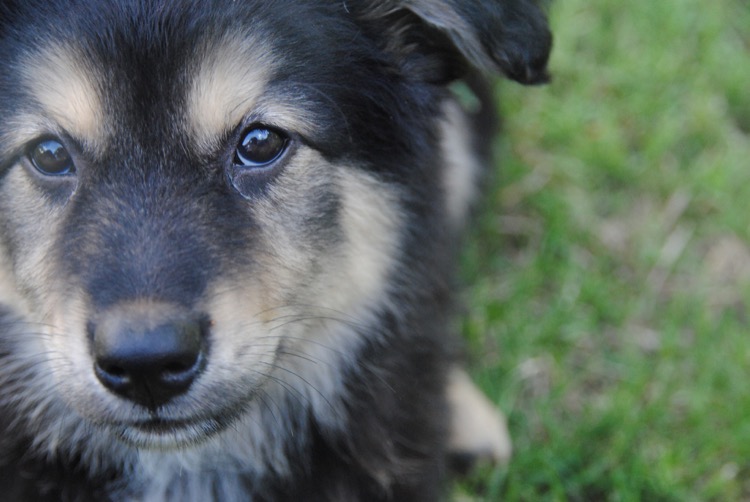
- Recognizing the Dog Bloat Timeline
- Understanding Gastric Bloat in Dogs and GDV
- Symptoms of Bloat in Dogs
- What Happens With Bloat in Dogs?
- What Should You Do If You Suspect Bloat in Your Dog?
- Educate Yourself About Dog Bloat Timeline
- Treatment of Bloat in Dogs
- Preventing Bloat in Your Dog
- Long-Term Management and Care Post-Bloat
- Frequently Asked Questions (FAQ)
- References

Don’t leave your pet’s safety to chance
Sign up for Petful recall alerts today.

Recognizing the Dog Bloat Timeline
Bloat in dogs is a serious condition that is potentially life-threatening and a genuine emergency. If ever you suspect your dog has bloat, contact a veterinarian immediately — time is of the essence.
Even with emergency treatment, up to 45% of dogs with bloat cannot be saved.
Key signs of bloat in dogs:
- Rapidly swelling tummy
- Nonproductive retching or vomiting
- Dry heaving, especially if the belly is getting bigger
Any dog exhibiting these symptoms must be seen by a vet urgently. Many aspects of the dog bloat timeline, including what causes this life-threatening condition, are still a mystery and, unfortunately, give rise to wrong or misleading information on the internet. We hope this article helps set the record straight.
For people who have dog breeds that are at risk, know that although there are precautions you can take to help reduce the risk, bloat can still happen despite all precautions.
Understanding Gastric Bloat in Dogs and GDV
Gastric Bloat in Dogs
Gastric bloat in dogs occurs when the stomach fills up with gas, becoming distended, and the gas cannot escape. This condition is serious and requires emergency treatment. If not treated promptly, it can be life-threatening within hours. Understanding the dog bloat timeline is crucial for recognizing the urgency of the situation.
Gastric Dilatation-Volvulus (GDV) in Dogs
GDV, or gastric dilatation-volvulus, is even more severe as the stomach twists, cutting off inflow and outflow. This condition is an extreme emergency and can be life-threatening within hours if not treated. Understanding the dog bloat timeline is essential as survival rates depend on timely treatment, but even then, 25–45% of affected dogs may not survive.
If treatment isn’t instituted within a few hours, the situation can become life-threatening. Survival rates are correlated with timely treatment. Even with treatment, different studies report that 25–45% of affected dogs will not make it.
Symptoms of Bloat in Dogs
The most obvious symptoms in the dog bloat timeline are a swollen belly and a dog trying to vomit but bringing nothing up. Giant-breed dogs may hide the distended stomach within their rib cage. Key symptoms include:
- Mild to extreme gastric distention
- Vomiting
- Restlessness
- Retching
- Excessive burping
- Flatulence
When a dog has classic bloat, their owner may describe the belly as looking swollen or as if the dog swallowed a basketball. Immediate veterinary attention is crucial.
Other signs in the dog bloat timeline include:
- Being unable to settle
- Pacing restlessly and vocalizing in pain (groaning, whining, or howling)
- Standing with an arched back and looking at their belly
Dogs may also drool excessively and exhibit restlessness in the early stages, then stand in a fixed position with a bloated abdomen. If you “ping” the stomach, it can feel like a drum.
Recent stress, such as kenneling, transport to or from a dog show, or recent surgery, can contribute to bloat. Bloat calls are common in the evening or early morning when veterinary hospitals are closed. The condition can deteriorate rapidly, leading to collapse.
Other signs to be alert for include:
- Pale gums
- Racing heart rate
- Rapid shallow breathing
- Groaning or whining
- Arched back
- Distended abdomen
- Nonproductive vomiting or retching
What Happens With Bloat in Dogs?
Breeds with deep chest cavities, such as Great Danes, German Shepherds, Greyhounds, and Dobermans, are more likely to develop a GDV.
This is due to their anatomy, where the deep chest means their stomach is suspended in the abdomen like a hammock between two trees:
- If there is a weight in the stomach (meaning: food) and the dog then rolls over or goes for a run, the stomach swings on its mountings and potentially flips over.
- The twisted stomach is a sealed unit, and gas produced as a result of digestion cannot escape.
- Pressure builds up inside the stomach, causing it to swell.
- The blood supply to the twisted stomach is cut off, and this piece of bowel rapidly dies off.
- Toxins filter into the bloodstream and cause organ failure.
Eventually, the combination of circulatory collapse, toxemia, and shock are fatal. Understanding the dog bloat timeline is crucial to recognizing the severity and taking immediate action.

Do Ice Cubes Cause Bloat in Dogs? No.
An old post on social media keeps resurfacing and just won’t go away. It warns about the supposed dangers of ice cubes causing gastric bloat in dogs. Vets all over the country are once again getting frightened calls from people.
Key points to understand:
- Summer is a time when folks might offer their overheated dogs some ice cubes.
- Rest easy: the ice cube myth has been debunked.
Understanding the dog bloat timeline and the actual causes of bloat is crucial for preventing unnecessary panic and ensuring your dog’s safety.
What Breeds Are at Risk of Bloat in Dogs?
When a vet thinks of bloat, the first breed that comes to mind is the Great Dane. This breed is most likely to bloat, with some studies reporting that up to 40% of Great Danes will bloat at some point in their lives.
Giant- and large-breed dogs with deep, narrow chests are predisposed to bloat. Here is a list of 15 dog breeds prone to bloat:
- Great Dane
- German Shepherd
- Greyhound
- Doberman
- Akita
- Bloodhound
- Standard Poodle
- Irish Setter
- Gordon Setter
- Wolfhound
- Weimaraner
- Rottweiler
- Newfoundland
- Collie
- Saint Bernard
This list is not exhaustive. Any dog, particularly larger dogs, can bloat. Among smaller breeds, the Bassett Hound is also predisposed to bloat/GDV.
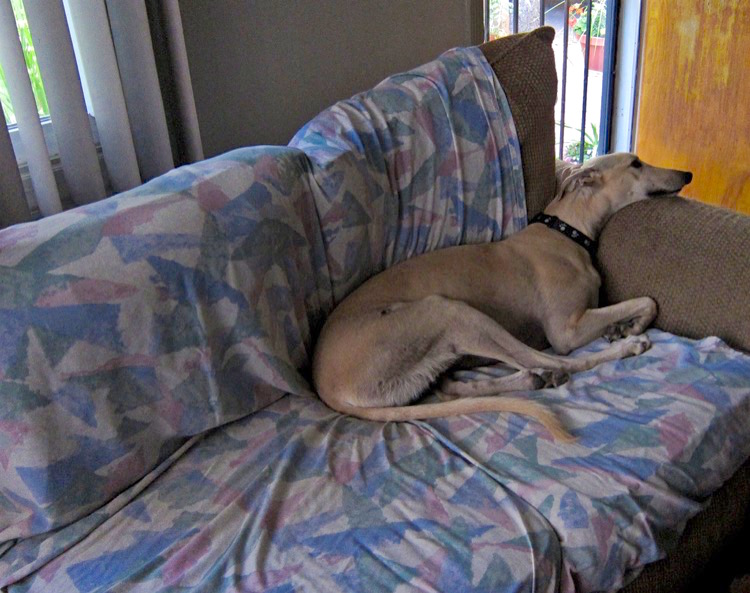
What Should You Do If You Suspect Bloat in Your Dog?
If you suspect bloat in your dog, immediate action is crucial. Here’s what you should do:
- Get to the nearest vet: Preferably a clinic or emergency facility that can handle emergency surgery if necessary. This is a situation where time is of the essence.
- Quick action: Survival rates increase with rapid response.
- Clinical assessment: The history and presenting signs give the clinician a good idea of what is going on.
- X-ray confirmation: An X-ray with the dog lying on their right side can quickly show if their stomach is out of position and twisted.
Understanding the dog bloat timeline and taking swift action can significantly impact the outcome for your dog.
Educate Yourself About Dog Bloat Timeline
If one of the breeds prone to bloat is part of your family, make yourself knowledgeable about the disease. Understanding the dog bloat timeline and related factors can help in prevention and early detection.
1. Feeding
- Feeding one large meal a day is a risk factor for breeds prone to bloat. Instead, we recommend three smaller feedings daily.
- Eating rapidly and gulping air is also likely a risk factor.
- Dry dog food alone may be a risk factor, though this is controversial.
- Rigorous exercise one hour before or after a meal used to be considered a risk factor, but this is now controversial.
- Elevated food bowls are likely a risk factor. Feeding from the floor or very low to the ground is currently recommended.
- Stress while eating is a risk factor. Competition and other stresses around the food bowl should be avoided.
2. Age and Genetics
- The possibility of bloat increases with age, commonly between 3–7 years old.
- If a close relative of a pup has bloated, this increases the risk that your pup could bloat as they age.
- Do detective work if you are purchasing a breed at risk for bloat. Ensure a parent, aunt, or uncle of your pup has never bloated.
3. Personality
- Studies have found that “happy” dogs have less of a tendency to bloat, supporting the idea that stress can be a risk factor.
- Nervous, anxious, worried dogs may be under more stress, increasing their likelihood of bloat.
4. Stress
- Bloat is higher in dogs who have undergone stresses, such as being in a kennel, trucked back and forth to dog shows, or having had recent surgery.
- Time of year might be a factor. Some studies found more bloats and GDV in the summer months, possibly due to environmental stresses, changes in routine, more dogs being kenneled, or the stress of vacations.
- Another study of military working dogs found more bloats in winter during abrupt, drastic changes in cold temperatures.
Bottom line: Stress of any kind may increase the possibility of bloat.

Treatment of Bloat in Dogs
The treatment of bloat, particularly GDV, involves surgical correction to untwist the stomach and remove any dead stomach wall. This procedure is complex and comes with significant risks due to the dog’s condition.
Steps in the Treatment Process:
- Stabilization
- The dog must first be stabilized with aggressive, high-volume doses of intravenous fluids.
- Stabilization is crucial as the dog is in a toxic, shocked state, increasing the risk of losing the patient under anesthetic.
- Emergency Surgery
- Once the dog is anesthetized, emergency surgery is performed.
- The surgery involves repositioning the stomach, emptying out the gut contents, and removing any dead tissue.
- The final step is suturing the stomach to the body wall to prevent recurrence.
Understanding the dog bloat timeline and the urgency of treatment can make a significant difference in the outcome for your dog.
Preventing Bloat in Your Dog
In recent years, many veterinarians have recommended a gastropexy for breeds or individual dogs at
In recent years, many veterinarians have recommended a gastropexy for breeds or individual dogs at high risk of bloat. A gastropexy is a tacking of the stomach that can be performed during a spay or neuter as an additional procedure. Although it’s possible for bloat to occur after a gastropexy, it’s rare. GDV should not occur in a dog with a functional gastropexy.
Preventive Measures at Home:
- Timing of Exercise: Don’t exercise your dog within 90–120 minutes of eating.
- Diet: Avoid high-cereal-content foods as they tend to produce more gas when digested (think baked beans).
There’s no way to predict when a dog may bloat, but understanding the signs of this potentially fatal condition, knowing your breed’s predilection, and absolute quick emergency recognition and response on your part may save your dog’s life.
For more detailed information, consider reading about gastropexy.
Long-Term Management and Care Post-Bloat
After a dog experiences bloat or GDV, proper long-term management and care are crucial for recovery and preventing recurrence. Here are key aspects of post-bloat care:
Diet Changes:
- Switch to a low-risk diet that is low in fermentable carbohydrates and high in protein. Avoid high-cereal-content foods that can produce excess gas.
- Feed smaller, more frequent meals throughout the day instead of one large meal.
- Avoid feeding your dog immediately before or after vigorous exercise.
Activity Restrictions:
- Limit strenuous activities, especially around meal times. Ensure your dog has a calm environment to eat in, reducing stress while eating.
- Gradually reintroduce exercise, starting with light activities and gradually increasing as your dog recovers.
Follow-Up Veterinary Care:
- Schedule regular follow-up appointments with your veterinarian to monitor your dog’s recovery and detect any potential complications early.
- Your vet may recommend a gastropexy procedure if it hasn’t already been done to prevent future occurrences of GDV.
- Be vigilant for signs of bloat recurrence, such as a distended abdomen, restlessness, or nonproductive retching.
Additional Care Tips:
- Keep an emergency kit handy, including your vet’s contact information and the location of the nearest emergency clinic.
- Educate yourself and your family on the early warning signs of bloat to ensure prompt action if it occurs again.
Frequently Asked Questions (FAQ)
What is bloat in dogs?
Bloat, or gastric dilatation-volvulus (GDV), is a life-threatening condition where a dog’s stomach fills with gas and may twist, cutting off blood flow.
Which dog breeds are most at risk for bloat?
Breeds with deep chests, such as Great Danes, German Shepherds, and Dobermans, are most at risk for bloat.
How can I prevent bloat in my dog?
Prevent bloat by feeding smaller, frequent meals, avoiding exercise around meal times, and reducing stress during eating.
References
- “Gastric Dilatation-Volvulus.” American College of Veterinary Surgeons. https://www.acvs.org/small-animal/gastric-dilatation-volvulus.
- Fossum, Therese Welch, DVM, PhD, DACVS. Small Animal Surgery. Mosby. 2018.
- “Recognizing the Signs of Bloat in Your Dog.” IAMS. https://www.iams.com/dog/dog-articles/recognizing-signs-bloat-your-dog.
- “Gastric Dilatation-Volvulus.” American College of Veterinary Surgeons. https://www.acvs.org/small-animal/gastric-dilatation-volvulus.

